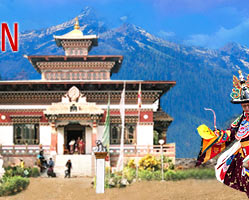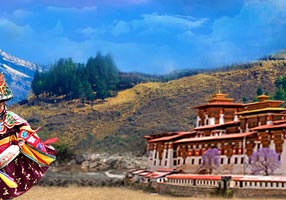In the northern region of Bhutan, certain mountain peaks in the Himalayan range are higher than 7000 meters. For a long time, Bhutan has claimed that it houses the highest unclimbed mountain in the world and highest point in the Himalayas, known as Kula Kangri, which is 7553 m high. It is disputed, though. It is said that detailed topographic studies show that Kula Kangri is wholly in Tibet. China also claims that modern measurements show that Gangkhar Puensum is taller than Kulu Kangri at 7570 m and thus, deserves the title of being the highest unclimbed mountain of the world. It is extremely cold at these high altitudes and high peaks are covered with sow all the year round.
Lesser mountains and the gorges are brown and barren in summer because of the high winds and have wind tunnels while in winter; they are covered with ice, have blizzards that drift slowly to central highlands in the south and look like frozen wastelands. Expansive forests that cover almost 70 percent of Bhutan’s area, isolated valleys and a great number of rivers that join Brahmaputra river of India characterize central highlands of Bhutan. Most of the Bhutanese population live in these highlands and Thimphu, the capital of Bhutan, is situated in the western region of these highlands. The winters in central highlands of Bhutan are cold while summers are quite hot. Landslides are common in monsoons here. At the extreme south of Bhutan, there is a strip of tropical plains, similar to those of India. This area is quite fertile and fit for agriculture and the region mostly produces rice.
Only two percent of Bhutan is arable and fit for agriculture and most of it is situated in this southern region of Bhutan. Bhutan has always been very conscious about its ecosystem and has worked to preserve it actively. Being isolated from the rest of the world for centuries, inhabited by only a handful of people and the topographical extremes of Bhutan, have been helpful in maintaining one of the most intact ecosystems in the world. Flora and fauna flourishes in Bhutan. Bhutan boasts of over fifty-five hundred diverse varieties of plant life exist including the three hundred plants that have been identified to have medicinal properties. Cannabis grows wild here. It also boasts of over 165 identified species of fauna including several rare and endangered species such as red panda, snow leopard, and golden langur.




